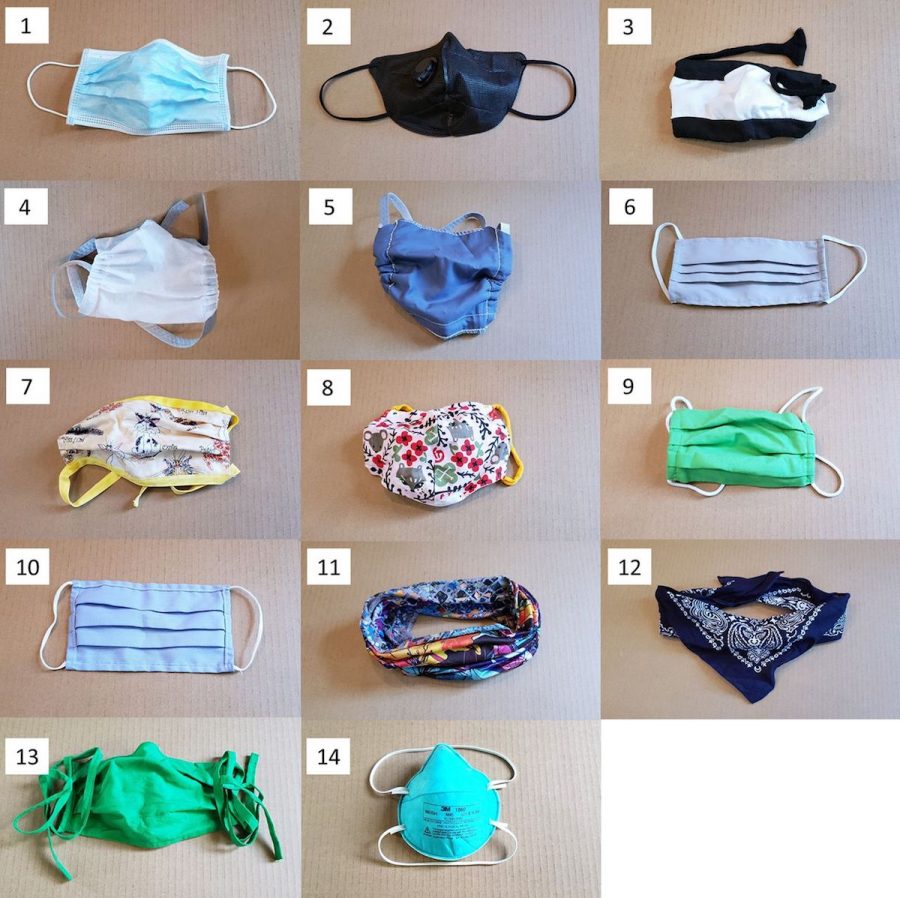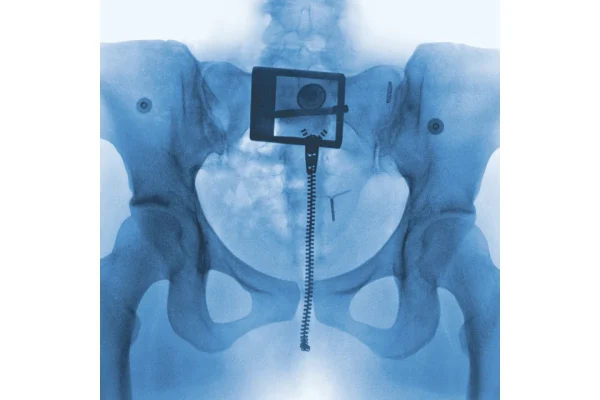Facial masks that miss the mark
Photo Courtesy of Hartford Health Care
These are the 14 masks that were tested in the study at Duke University. The most effective mask was the N95, used by many health care professionals.
The pandemic has spurred everyone to wear masks — disposable, face gaiters, homemade, etc. — in public areas, but not all masks are equally effective.
While the Center for Disease Control and Prevention (CDC) has repeatedly confirmed the necessity of masks, a quick loop in the grocery store will show not everyone prioritizes health. Some masks are routinely slouching below snotty noses and others remain in place, but are only a sneeze away from bursting.
Some departments at Duke University began distributing masks to the community and clarified who’s masks were doing the most against COVID-19. A study was conducted with 14 different masks, ranking their safety.
With a box, camera, laser and tester, professors tested each mask 10 times, measuring the particles leaving the masks. This determined which masks protected the user and the people around them the best.
At the end, some commonly used masks — folded bandanas, neck gaiters and knitted masks — offered almost no protection. These options were determined to be almost as effective as just not wearing a mask at all.
This study doesn’t just let the public know who to steer clear of in the grocery store, but could be a way for companies to test their masks, before they’re released to the public.
“This is a very powerful visual tool to raise awareness that a very simple mask, like these homemade cotton masks, do really well to stop the majority of these respiratory droplets,” researcher Mark Fischer said to CNN. “Companies and manufacturers can set this up and test their mask designs before producing them, which would also be very useful.”
The most effective mask was the N95 mask, often used by many health care professionals. Three layer disposable masks and homemade cotton masks also ranked well and are more accessible to the public.
This is the complete ranking, which corresponds to the photo of all the masks:
1. Fitted N95, no valve (14 in photo)
2. 3-layer surgical mask (1)
3. Cotton-polypropylene-cotton mask (5)
4. 2-layer polypropylene apron mask (4)
5. 2-layer cotton, pleated style mask (13)
6. 2-layer cotton, pleated style mask (7)
7. Valved N95 mask (2)
8. 2-layer cotton, Olson style mask (8)
9. 1-layer Maxima AT mask (6)
10. 1-layer cotton, pleated style mask (10)
11. 2-layer cotton, pleated style mask (9)
12. Knitted mask (3)
13. Double-layer bandana (12)
14. Gaiter-style neck fleece (11)
This study offers specific statistics to rank the masks available, but the results shouldn’t surprise many.
The masks that performed the highest are also the most secure with the highest thickness. For anyone still making a political statement by putting people’s lives in danger, here are concrete results.
These rankings offer positive affirmation for everyone following CDC guidelines and being as safe as possible.
On the other hand, bandannas and neck gaiters have shown positive health results in the past year with the exercise its users get by scooching the fabric up every few seconds. While someone shouldn’t need exact statistics to start caring about others and wearing effective masks, hopefully, this will be a wake-up call for droopy mask users.
No one’s shopping spree needs a stranger’s runny nose and grumbling attitude. Be safe for yourself and the people around you.








